Try these super easy Korean pickled onions and add big flavour to your table! Known as yangpa jangajji, these quick white onion pickles in soy sauce are the perfect side dish for your next home cooked Korean BBQ!
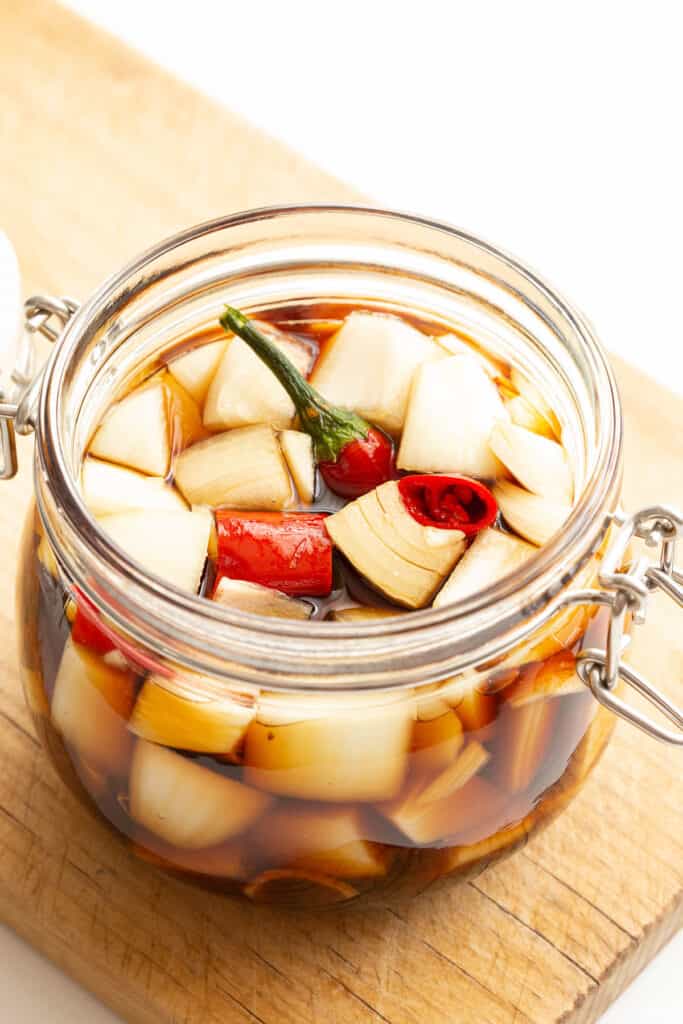
Why We Love This
This Korean pickled onion recipe (yangpa jangajji / 양파 장아찌 in hangul) makes for a tasty side dish (banchan in Korean) you can serve alongside pretty much everything! We particularly love it with rice bowls, Korean BBQ beef bulgogi or spicy dakgalbi chicken stir fry.
It’s so easy to make these quick pickled white onions. They’re quick to make, super crunchy and packed with flavour. You can eat a few straight away, but they’re even better if you wait a day for the flavours to really develop. The waiting is the hardest part!
As it’s such a simple recipe, we love making this in a smaller portion so we ensure we’ll be able to eat them all up before their use by date.
Related: Korean Pickled Garlic / Japanese Takuan / Vietnamese Pickled Carrots and Daikon
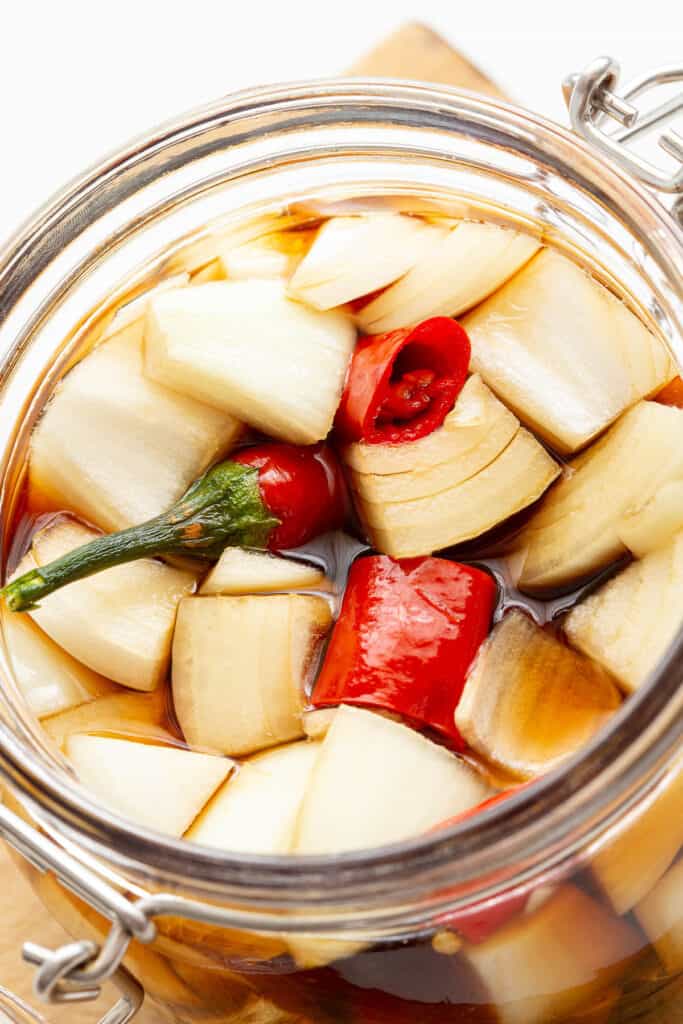
What are Korean Pickled Onions?
Korean white pickled onions are a traditional way to preserve onions and make them last throughout the winter.
They’re usually pickled in a simple brine of soy sauce, vinegar and sugar to add flavour and keep out bacteria and make them last as long as possible. Before the invention of refrigerators, the salt content would have been much higher – now it’s no longer necessary.
Pickles in soy sauce are a popular banchan (side dish) served in restaurants, especially at Korean BBQ alongside freshly cooked brisket or pork belly, as well as home cooked meals.
The ratios are an easy 1:1:1:1 – so as long as you have equal portions of each ingredient, you can make the recipe bigger or smaller to suit what you have on hand.
This recipe is naturally vegetarian and vegan friendly.
Want to make more Korean style preserves? Try kimchi, pickled garlic or yellow daikon pickles.
What You’ll Need
- Onions – Use your favourite regular everyday onions – white, brown, yellow or red all work well. You can even use smaller shallots, whatever you have on hand.
- Soy Sauce – We use regular soy sauce, but if you have light or dark on hand just use it. It may affect the final flavour slightly but will still taste delicious.
- Vinegar – Rice vinegar or white vinegar are popular options, but you can also use apple cider vinegar, brown vinegar, or a mix of different vinegars to tweak the flavour just how you like it.
- Sugar – Regular white sugar is fine. If you have caster or raw sugar on hand you can also use that.
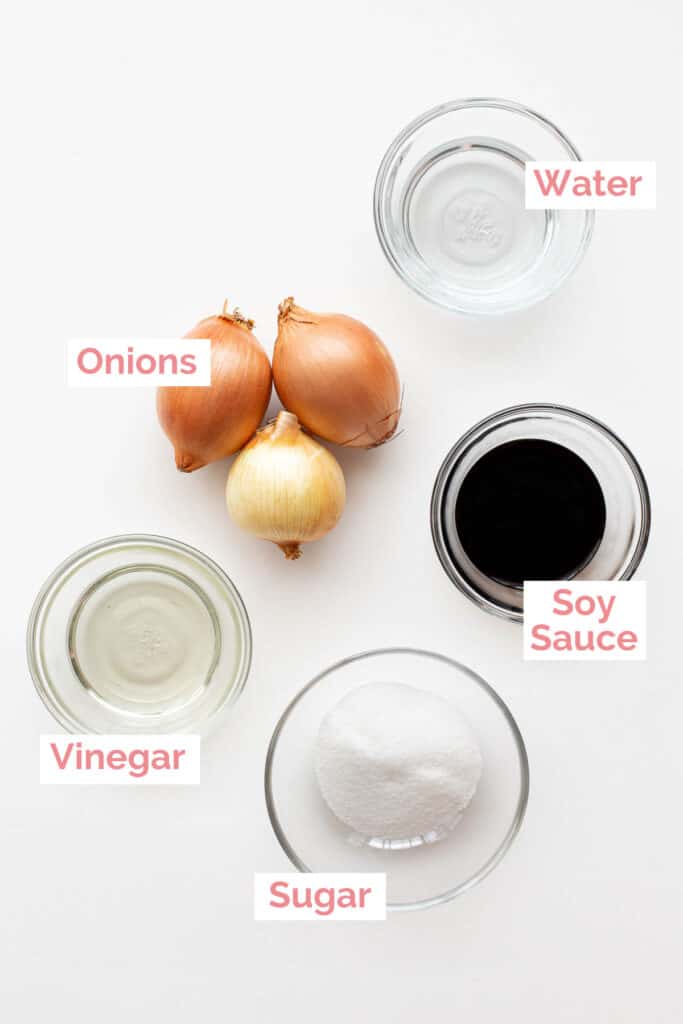
How to make Yangpa Jangajji:
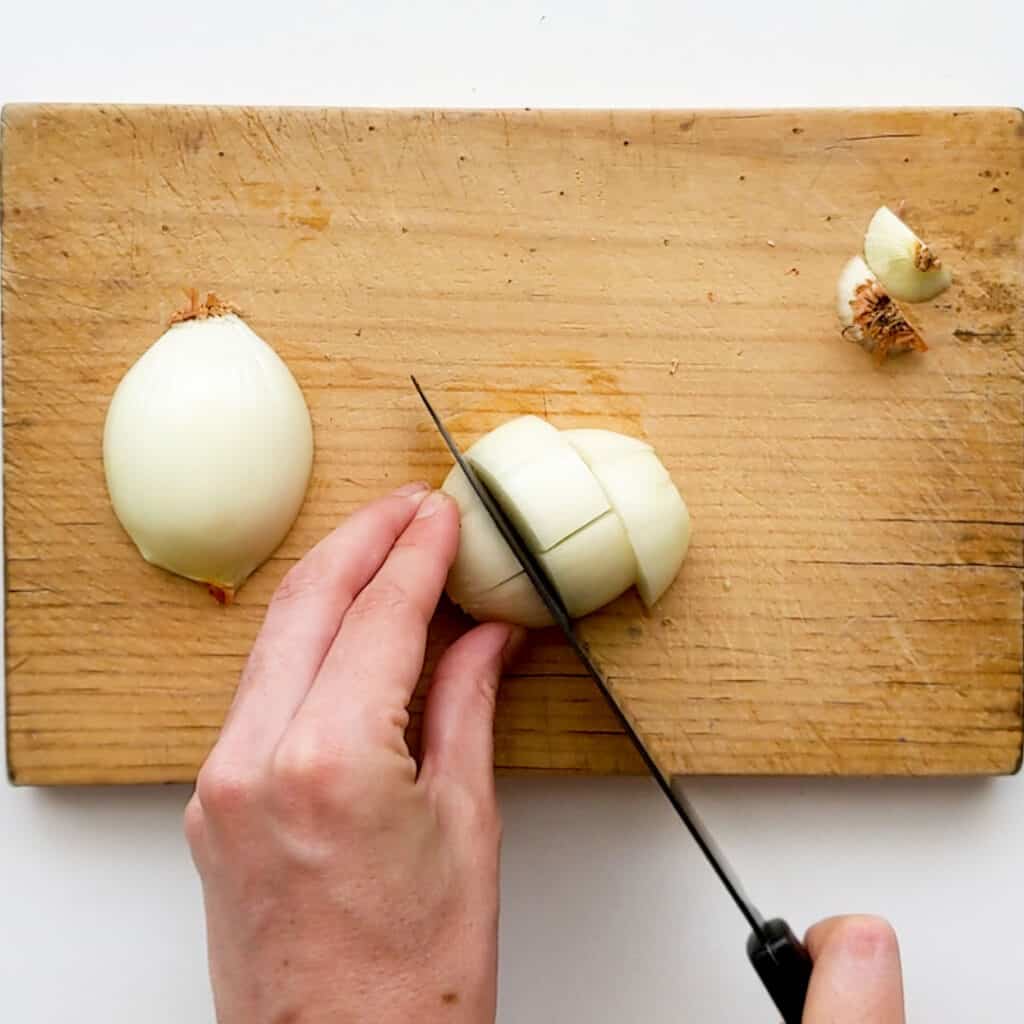
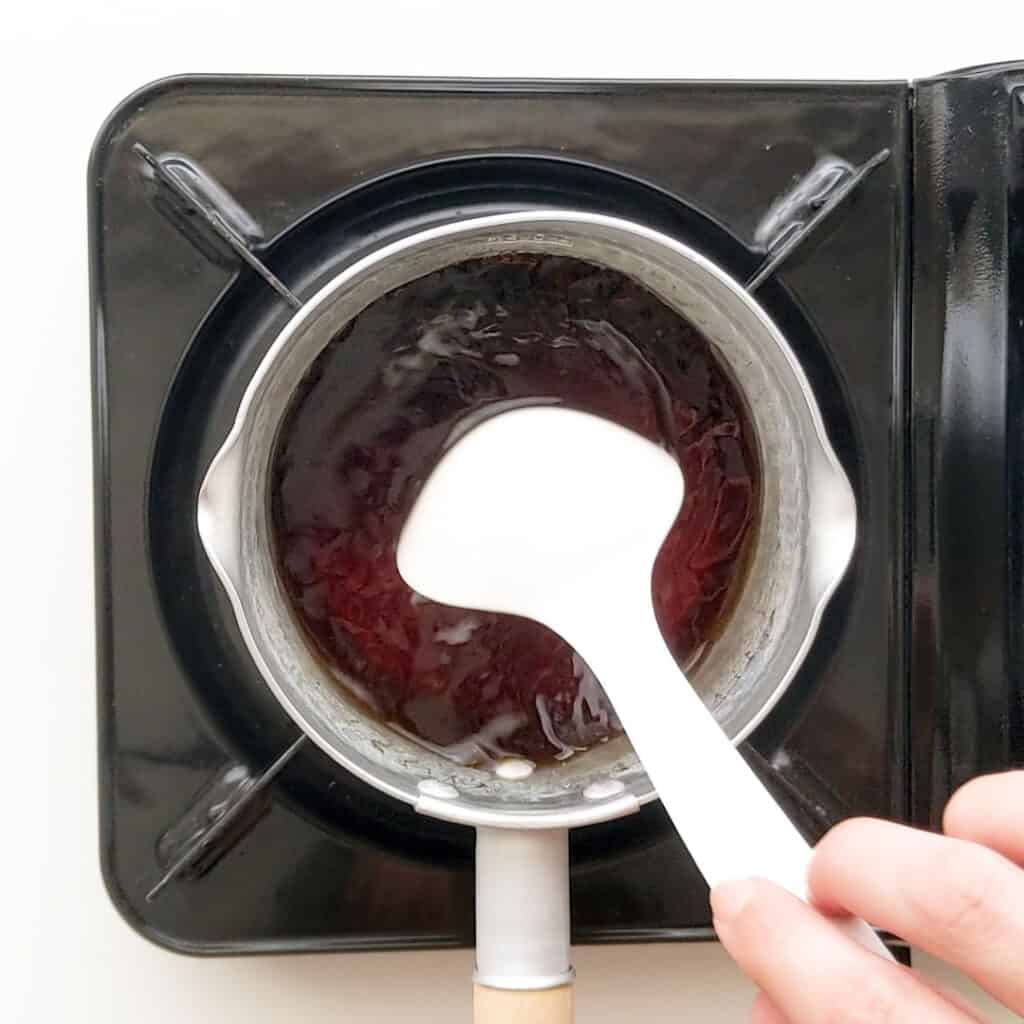
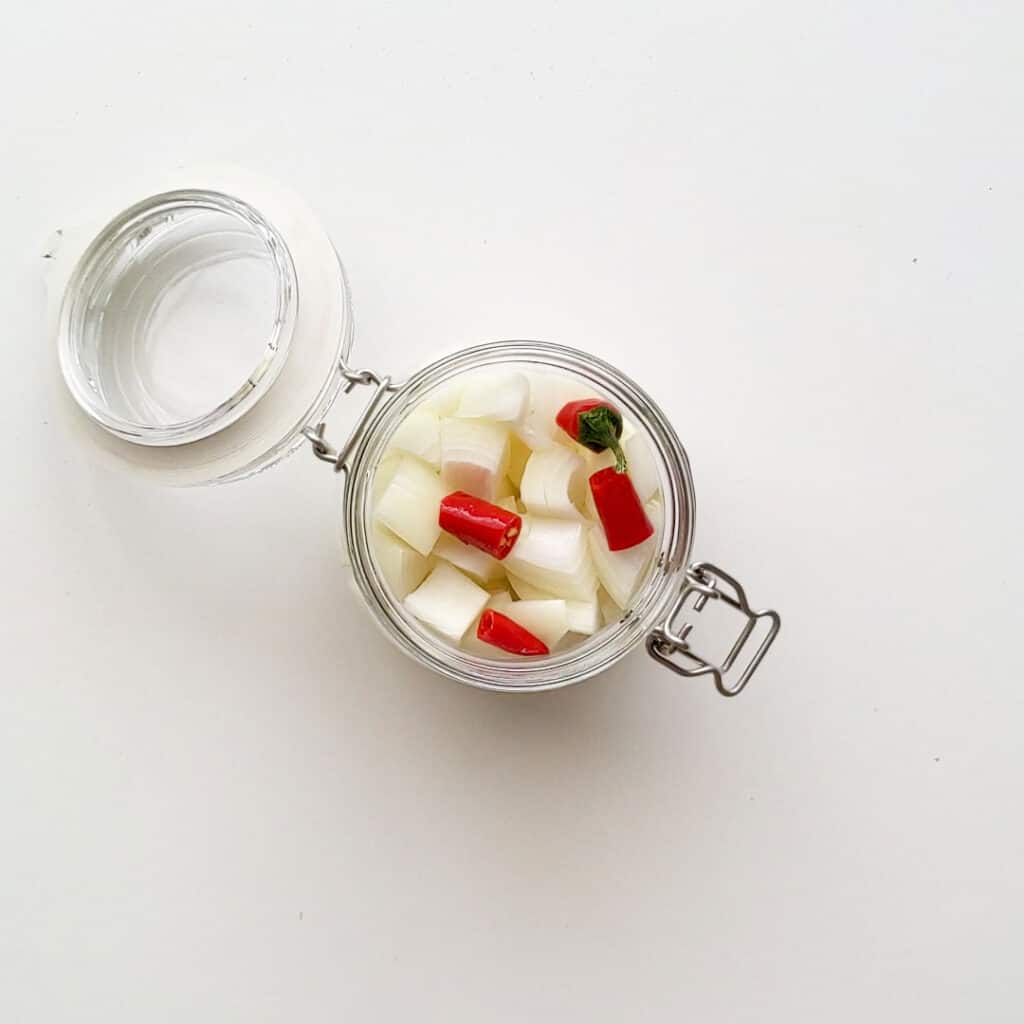
- Chop the onions into small bite size segments. A good way to do this is to chop them in half, slice off the roots and tips and peel off the skin. Chop each segment in thirds in one direction, then again in the other direction. Optional: Chop the chilli into chunks or rings.
- Pour the soy sauce, vinegar, sugar and water into a medium saucepan. Bring to the boil and stir to dissolve the sugar, then reduce heat and simmer for a minute or two for the flavour to develop.
- Transfer the onions (and chilli, if using) into clean, sterilised jars. Depending on the size of your onions and your jars, you may need 1-2 jars on hand for this recipe.
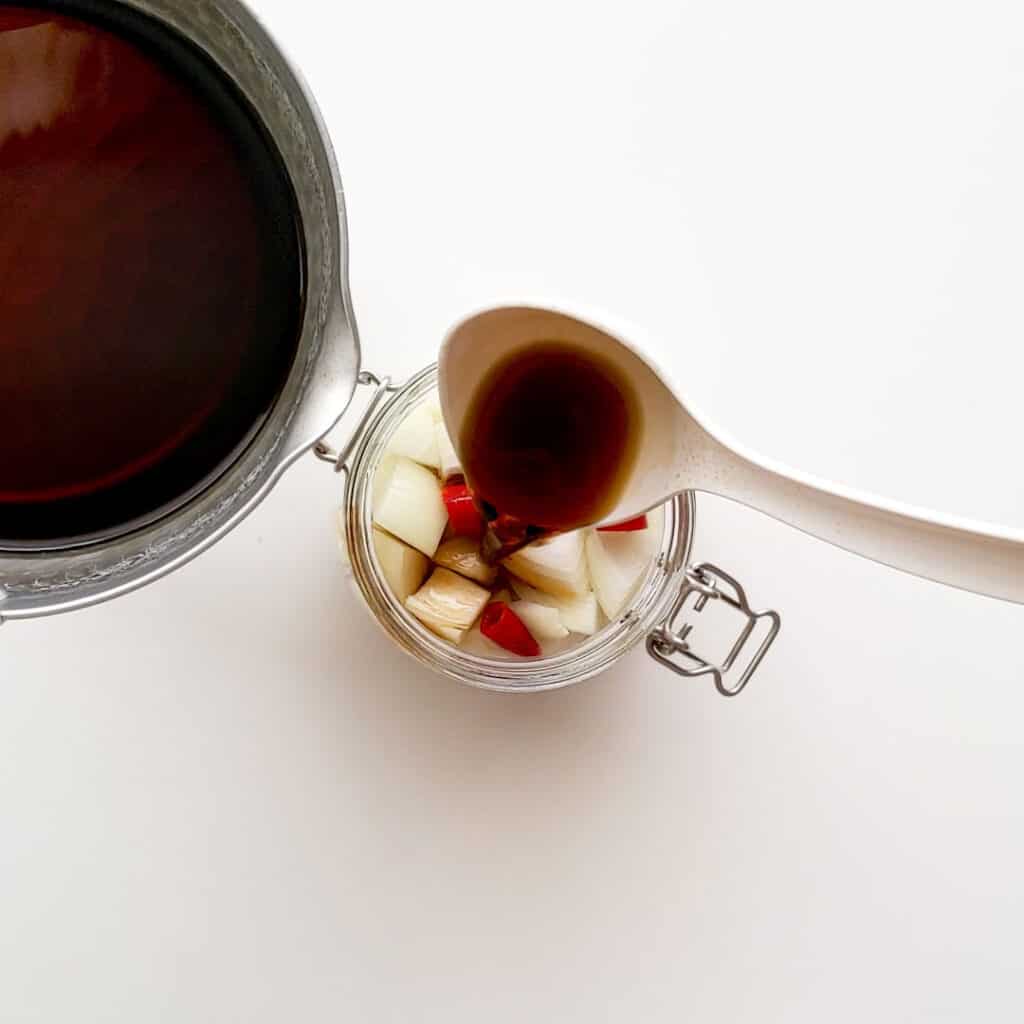
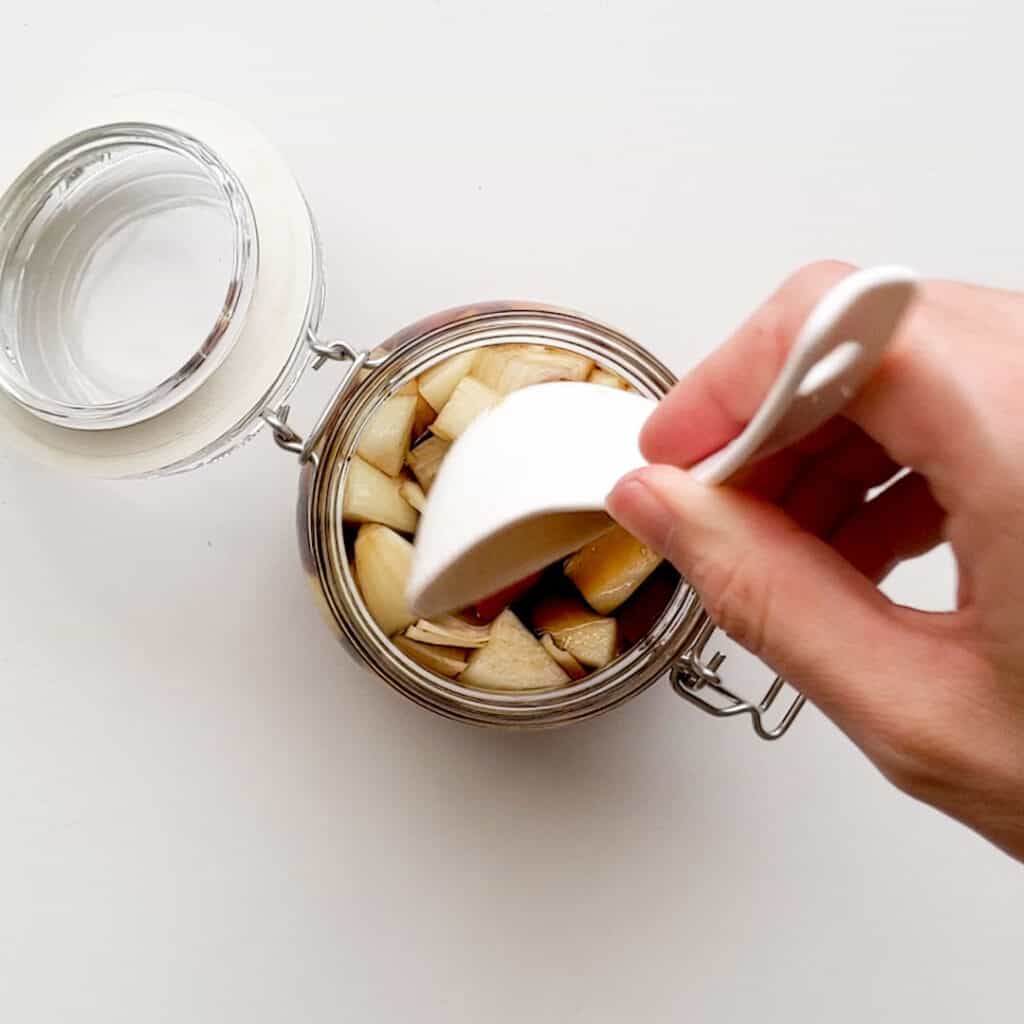
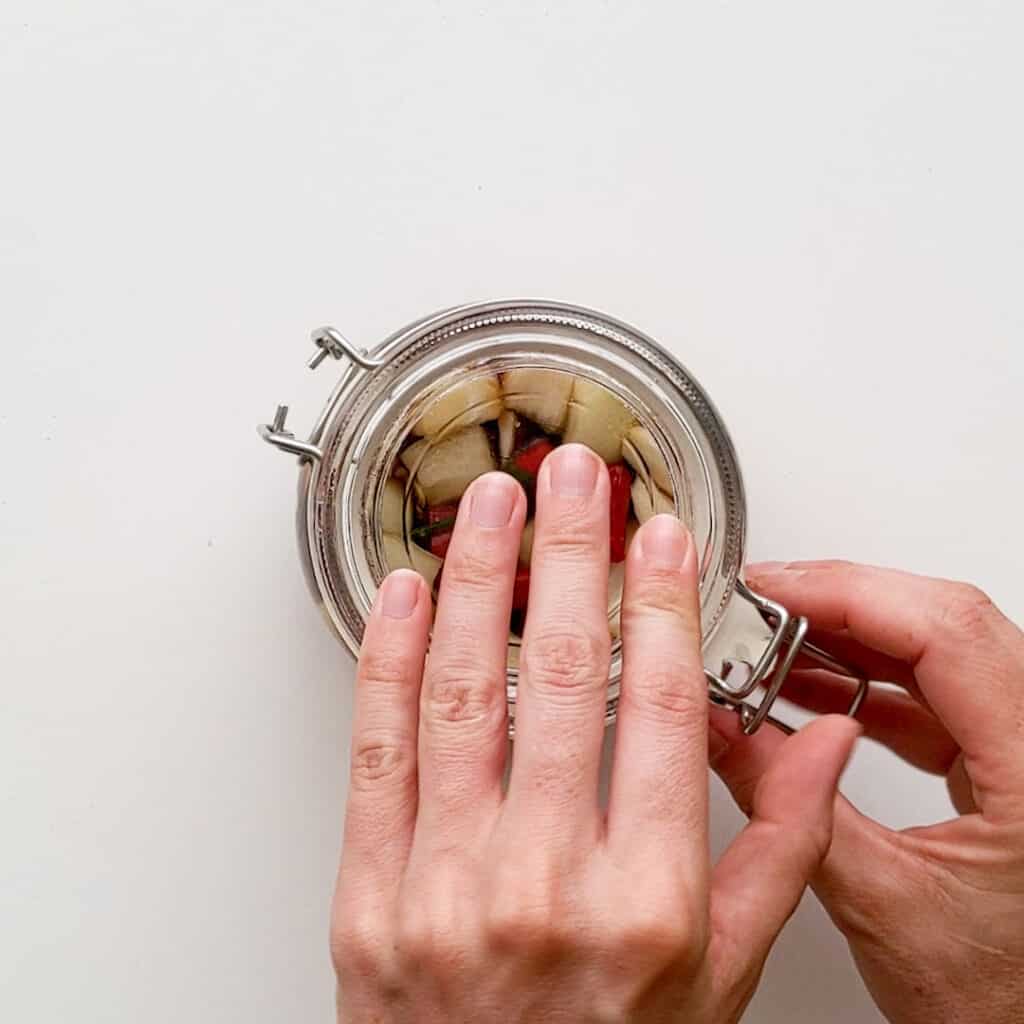
- Pour the pickling liquid over the onions until just covered.
- Press down with the spoon or ladle to make sure everything is covered.
- Seal the lid tightly and let it cool down to room temperature, then store in the fridge.
Wandercook’s Tips
- Avoid Crying While Cutting Onions – It’s a GREAT idea to wear sunglasses or goggles to protect your eyes while chopping onions. Who cares what you look like in the comfort of your own kitchen! 🙂 Otherwise, it’s also said that a wet rag next to your work surface can help absorb some of the juice. There’s so many ways you can avoid crying while cutting onions!
- Size – It doesn’t matter what size you chop the onions, but bigger ones are easier to pick up with chopsticks!
- Pickling Liquid – If you know your onions are extra small or extra large, you might need to adjust the amount of pickling liquid you make.
- Heat – Don’t worry about pouring the hot liquid over the onions, it won’t cook them. The heat actually helps to make them crispier.
- Saucepan – If you have a saucepan with a pouring spout on the side this will make it much easier to pour the pickling liquid over the onions.
- Save on Waste – Pickling is the perfect way to use up any extra onions lurking in your cupboards or if you’ve had a bumper crop in your garden.
FAQs
Traditionally you’ll usually find them served alongside rice bowls, fresh lettuce and garlic cloves, and BBQ meats. But they really go amazing with just about anything! Serve up a small bowl on the table at dinner time alongside spicy Korean recipes like budae jjigae army stew or dakgalbi stir fry.
The leftover pickling liquid is full of so much flavour! Use it as a dipping sauce for barbequed meat or pour it straight over rice. You can even use it as a salad dressing (feel free to add extra salad dressing ingredients to give it even more zing) or as a marinade.
If you love vinegar on your hot chips, try giving this a go to add extra depth of flavour!
Store your pickles for up to one month in the fridge. Since they are considered “quick pickles”, it’s essential to store them in the fridge to avoid spoilage.
Since we’re not “canning” the pickles for extended shelf life, you can use recycled glass jars or any container with a lid will work, as long as they have a good seal. You can of course use mason jars or canning jars if you have them.
You can, but you don’t need to as it’s not essential to the process. It’s completely up to you.
Variations
- Add Umami – Add a small piece of kelp or a tsp of dashi powder while boiling the liquid.
- Make it Spicy – Add a scoop of gochujang or thin slices of your favourite red or green chillies. You can use larger chillies to infuse more taste than heat. If you can source them, traditional Korean cheongyang red pepper goes very well!
- Make it Stronger – Leave out the water for a stronger flavour finish.
- Add Other Veggies – Make this with sliced or chopped carrot, cucumber, daikon radish, or a mix of your faves. For other veggies like string beans, bok choy or broccoli, it’s a good idea to blanch them first.
- Add Garlic – Throwing in a clove or two of garlic will give it some extra bite, or if you have glut of garlic, make your own pickled garlic instead!
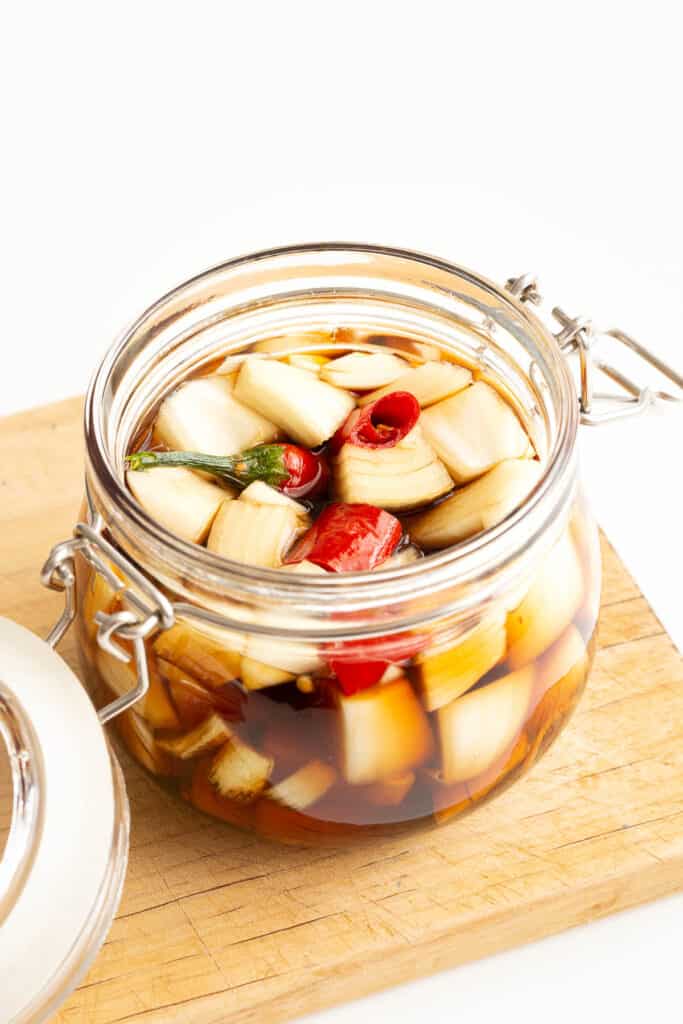
Make these pickles and preserves next to amp up your dishes:
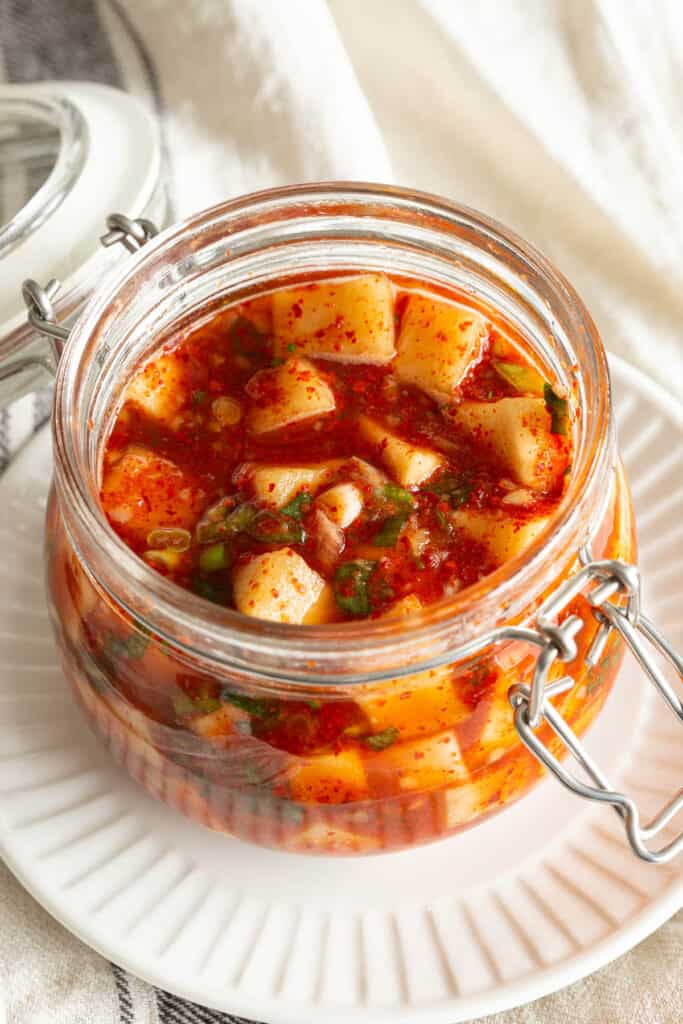
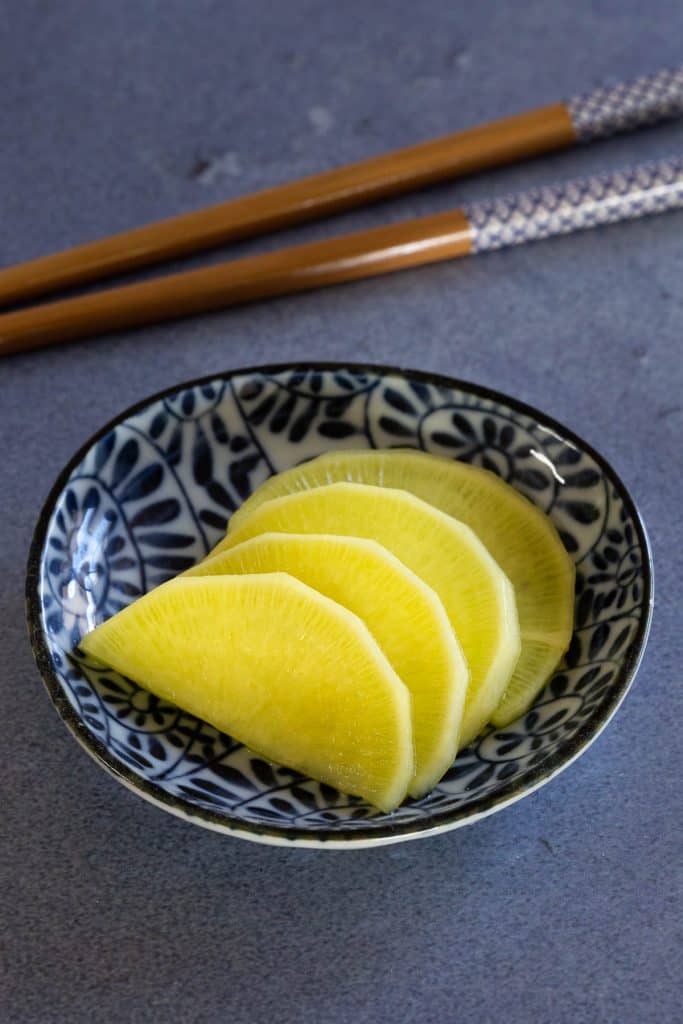
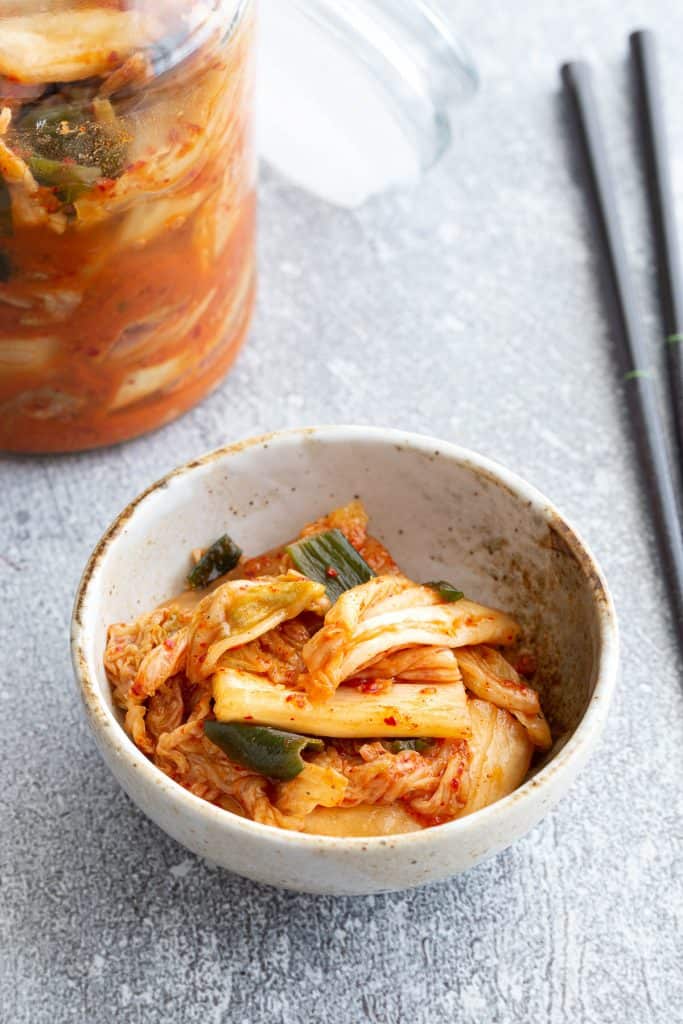
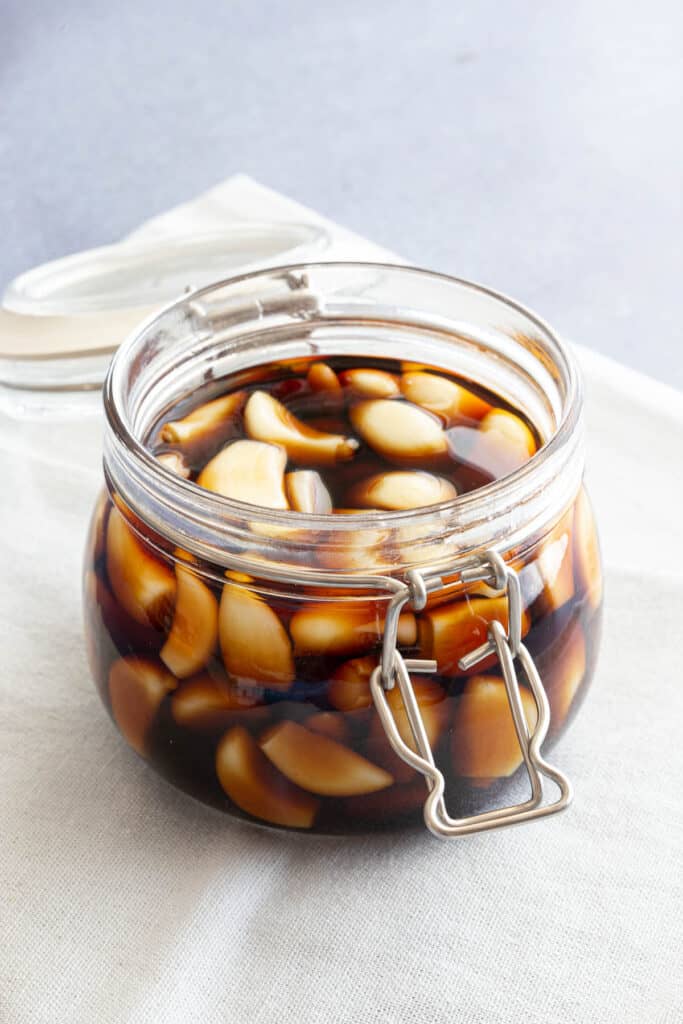
★ Did you make this recipe? Please leave a comment and a star rating below!
Equipment
Ingredients
- 3 small onion around 250 g / 8.8 oz , chopped into bite size pieces
- 1/4 cup soy sauce
- 1/4 cup sugar 40 g / 1.4 oz
- 1/4 cup rice wine vinegar sub white vinegar or apple cider vinegar
- 1/4 cup water filtered if possible, sub with lemon juice for an extra tart finish
Optional
- 1 chilli chopped, sub Korean chilli powder if you want it spicy
Instructions
- Chop the onions into small bite size segments. A good way to do this is to chop them in half, slice off the roots and tips and peel off the skin. Chop each segment in thirds in one direction, then again in the other direction. Optional: Chop the chilli into chunks or rings.3 small onion, 1 chilli
- Pour the soy sauce, vinegar, sugar and water into a medium saucepan. Bring to the boil and stir to dissolve the sugar, then reduce heat and simmer for a minute or two for the flavour to develop.1/4 cup soy sauce, 1/4 cup sugar, 1/4 cup rice wine vinegar, 1/4 cup water
- Transfer the onions (and chilli, if using) into clean, sterilised jars. Depending on the size of your onions and your jars, you may need 1-2 jars on hand for this recipe.3 small onion, 1 chilli
- Pour the pickling liquid over the onions until just covered.
- Press down with the spoon or ladle to make sure everything is covered.
- Seal the lid tightly and let it cool down to room temperature, then store in the fridge.
Video
Recipe Notes
- Storage – Store your pickles for up to one month in the fridge. Since they are considered “quick pickles”, it’s essential to store them in the fridge to avoid spoilage.
- Onions – It’s a GREAT idea to wear sunglasses or goggles to protect your eyes while chopping onions. Who cares what you look like in the comfort of your own kitchen! 🙂 Otherwise, it’s also said that a wet rag next to your work surface can help absorb some of the juice.
- Size – It doesn’t matter what size you chop the onions, but bigger ones are easier to pick up with chopsticks!
- Pickling Liquid – If you know your onions are extra small or extra large, you might need to adjust the amount of pickling liquid you make.
- Heat – Don’t worry about pouring the hot liquid over the onions, it won’t cook them. The heat actually helps to make them crispier.
- Saucepan – If you have a saucepan with a pouring spout on the side this will make it much easier to pour the pickling liquid over the onions.
- Save on Waste – Pickling is the perfect way to use up any extra onions lurking in your cupboards or if you’ve had a bumper crop in your garden.
- Add Umami – Add a small piece of kelp or a tsp of dashi powder while boiling the liquid.
- Make it Spicy – Add a scoop of gochujang or thin slices of your favourite red or green chillies. You can use larger chillies to infuse more taste than heat. If you can source them, traditional Korean cheongyang red pepper goes very well!
- Make it Stronger – Leave out the water for a stronger flavour finish.
- Add Other Veggies – Make this with sliced or chopped carrot, cucumber, daikon radish, or a mix of your faves. For other veggies like string beans, bok choy or broccoli, it’s a good idea to blanch them first.
- Add Garlic – Throwing in a clove or two of garlic will give it some extra bite, or if you have glut of garlic, make your own pickled garlic instead!
Nutrition
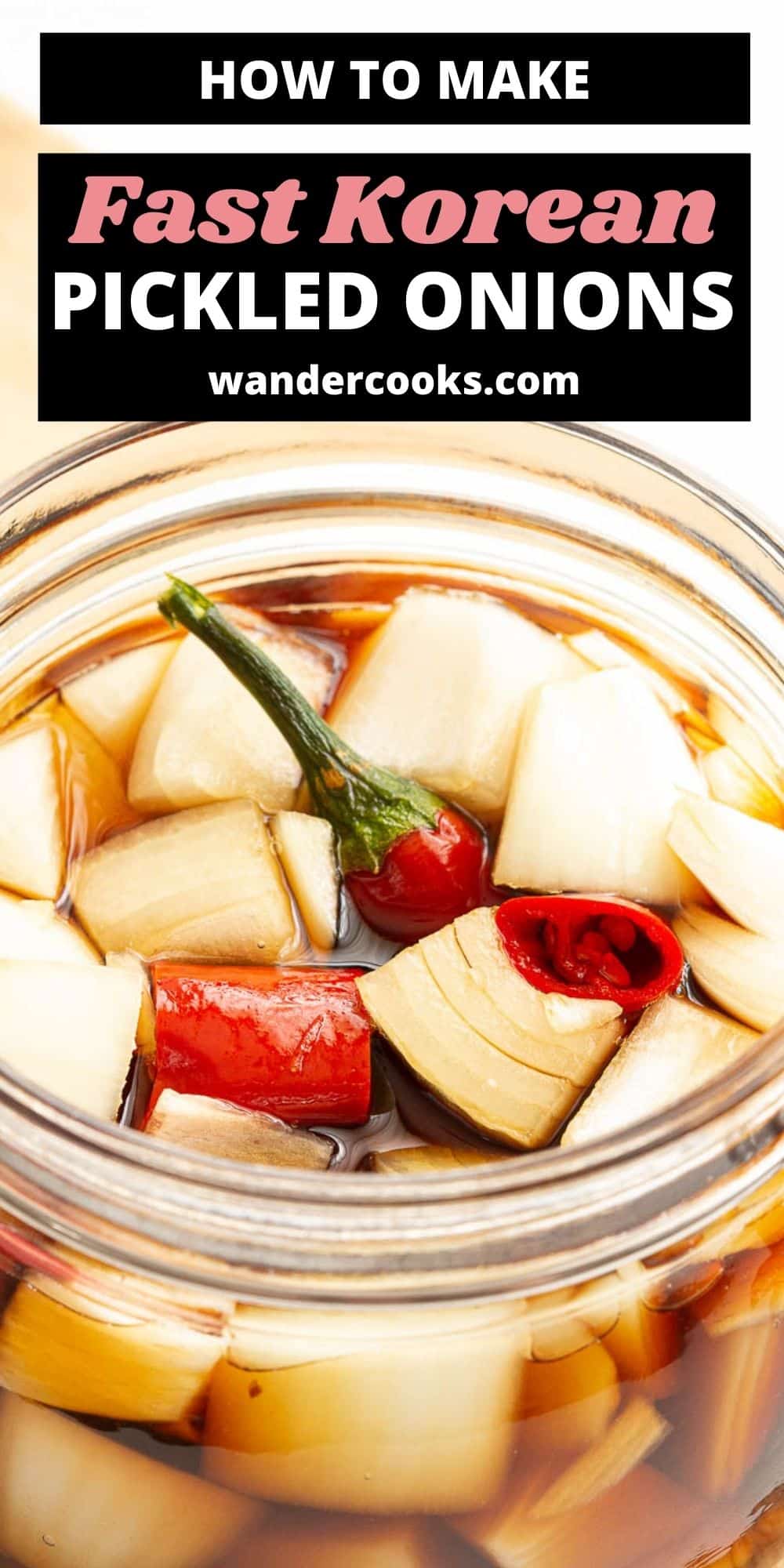

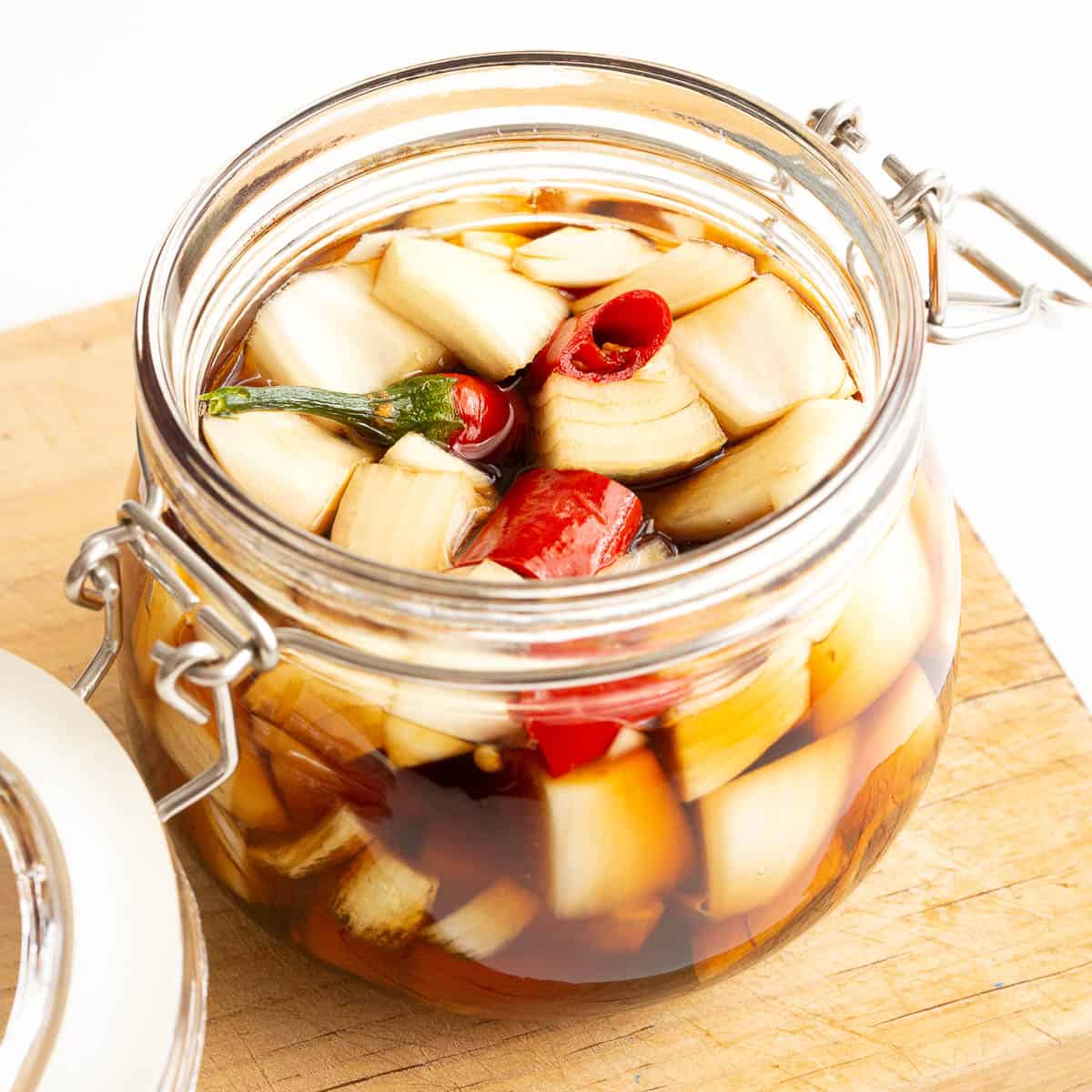


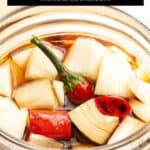
2 Comments
Janice Baker
26/06/2023 at 6:05 amI have not made these yet but I have a question.
My body does not process Soy well you so I stay away from it as much as possible. Can I substitute Coconut Aminos for the soy? It works well for many things, just not sure for pickling. Opinions appreciated.
Wandercooks
26/06/2023 at 8:52 amI believe as coconut aminos is a one to one substitute for soy sauce this *should* work. However, we haven’t tested it, so make sure you use your nose and eyes along the process to make sure everything is smelling and looking as it should with a good pickle. 🙂 Let us know how you go!